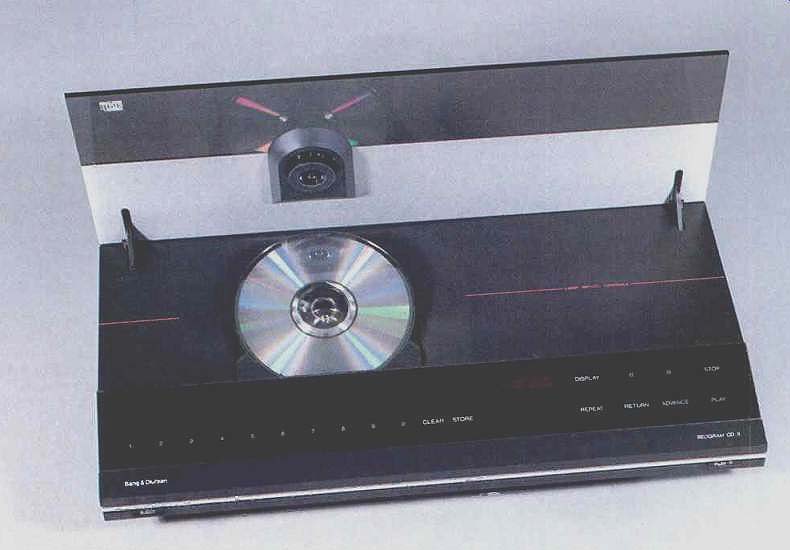
Manufacturer's Specifications:
Frequency Response: 3 Hz to 20 kHz, ±0.3 dB.
Harmonic Distortion: 0.003% at 0 dB, 0.03% at -20 dB.
S/N Ratio: Greater than 96 dB.
Dynamic Range: Greater than 96 dB.
Channel Separation: Greater than 94 dB, 20 Hz to 20 kHz.
Channel Difference: Less than 0.5 dB.
Converter System: 14-bit; 176.4-kHz oversampling.
Low-Pass Filter: Digital plus analog.
Number of Programmable Selections: 40.
Output Level: 2 V rms at 0 dB.
Power Requirements: 120 V, 50/ 60 Hz, 25 watts.
Dimensions: 161/2 in. W x 3 in. H x 12 1/4 in. D (42 cm x 7.6 cm x 31.1 cm).
Weight: 12.4 lbs. (5.6 kg).
Price: $699.
Company Address: 1150 Feehanville Dr., Mt. Prospect, Ill. 60056, USA.
Leave it to Bang & Olufsen to come up with a CD player distinctly different from the morass of look-alike models appearing recently. B & O's Beogram CD X is elegantly styled to match other components made by this Danish firm, whose products grace the permanent design exhibit at New York's Museum of Modern Art. But the B & O styling goes far beyond aesthetics. Of course, the CD X is beautiful to look at and is sure to be a conversation piece in any tastefully furnished home. However, it is also one of the easiest players to use, its gently sloping, black-tinted-glass control surface inscribed with words and numerals that need only to be lightly touched to perform various operations. There are no switches, knobs, or other protrusions on the top surface of the unit. As elegant as this arrangement is, I did find that with continued use, my fingers left marks on the polished glass surface, requiring rather frequent cleaning with a dry cloth. One gets the feeling, after a while, that this player should be approached only when wearing those white gloves that waiters sometimes wear in French restaurants.
Although the CD X has no provision for remote control, you are not likely to miss this feature, given random access to specific tracks and the amount of programmability avail able. You can program up to 40 commands for a given disc; since few discs contain this many actual tracks, you can ask for several tracks to be repeated.
Control Layout
"Control" is actually a misnomer here, for, as I've mentioned, the CD X has no operating controls in the traditional sense, other than an "Eject" button at the left of the narrow front surface and a "Play" button at the far right. There is also a "Play" on the control surface, with the difference that the button doubles as the on/off switch. If a disc is in place, touching either "Play" makes the CD X scan the disc, display the total number of tracks (up to 20) by a series of green numerals lighting up on the control surface, and begin play. At this point, you can program the CD X (either while the disc is playing or after pressing "Stop" on the panel) to play up to 40 tracks, in any order. Programming is begun by light touches on the control surface, just above the series of white numerals (0 through 9) which, in turn, appear just below the green numbers. Each selection is then completed by a light touch on the word "Store," just to the numerals' right. If you want to hear most, but not all, of the tracks, B & O makes this easy too: After first touching the number corresponding to the undesired track, simply touch the word "Clear" to eliminate that track from the playing sequence. With a disc containing many tracks, clearing or omitting one track is much easier and faster than having to store, say, 19 tracks.
If there is no disc in place when you press the "Play" button, a red question mark appears in the main display area to the right of the green or white track and programming numerals. To insert a disc, you press the "Eject" button. Three-quarters of the unit's top surface then gently lifts up, providing access to the CD turntable surface. At the same time, the turntable surface itself tilts up, almost "inviting" you to place a CD on it. Once a disc is in place, gently touching the open lid will cause it to close as quietly and as smoothly as it opened. Alternatively, touching the word "Play" on what B & O calls their "Sensi-touch" panel causes the lid to close and play to begin from the beginning of the disc.
To the right of panel center, the red LED display serves four purposes. Initially, it shows the elapsed time of the track currently playing. Touching the word "Display" replaces this with a readout of total elapsed time from the disc's beginning. Touched again, the display will show the track and index number currently being played. Finally, a question mark appearing in the display indicates that you have done something wrong and the CD X cannot follow your command. For instance, loading a disc upside down or asking for tracks that don't exist result in the question mark being displayed.
Fast-forward and fast-reverse search are accomplished by touching appropriate nomenclature on the "Sensi-touch" surface, but there is no audible sound while using these modes. The label "Return," touched once or repeatedly, allows you to move backwards, track by track, should you want to hear an earlier selection. Touching the word "Advance" skips tracks in the forward direction. Touching "Re peat" allows you to play a disc up to four times in succession. If you touch the word "Stop" briefly, disc play pauses and can be resumed from the same spot by touching "Play." However, if you hold your finger on the word "Stop" for more than 2 S, play is suspended completely and the disc stops spinning.
Instead of equipping the CD X with conventional female output jacks, Bang & Olufsen has supplied this unit with just over four feet of output cable, terminated in color-coded, male phono-tip plugs. Certainly the length of this cable is adequate for most installations. Even if more distance is needed between player and amplifier or preamplifier, you could always use an audio cable extension. But for the purist who insists upon using special audio cables (such as those equipped with gold-plated plugs), the arbitrary length and grade of the cable permanently affixed to the CD X may prove undesirable.
Measurements
Frequency response of the CD X was flat within 0.2 dB from 20 Hz to 20 kHz (see Fig. 1). I did notice a bit of ripple in the response, just before high-frequency cutoff above 20 kHz, which I can only attribute to the analog filters at the output of the D/A converters. These filters, by the way, are not of the steep, multi-pole type found in some CD players.
Since B & O uses the same D/A conversion technique employed by Philips (i.e., four-times oversampling and 14-bit linear conversion), "brick-wall" filters are not required and an analog filter of gentle slope can be used to minimize phase shift.
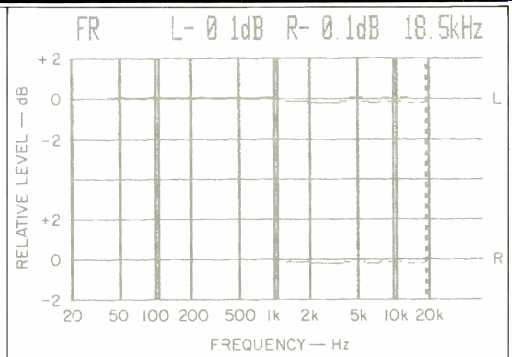
Fig. 1--Frequency response, left (top) and right channels.
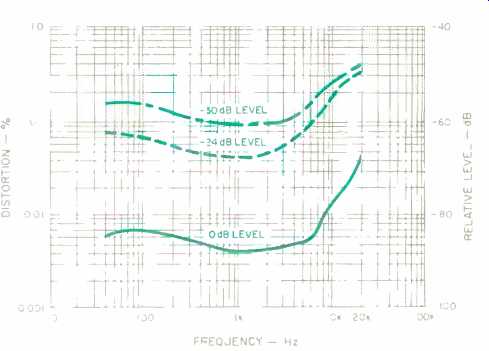
Fig. 2--Distortion vs. frequency at three recorded levels.
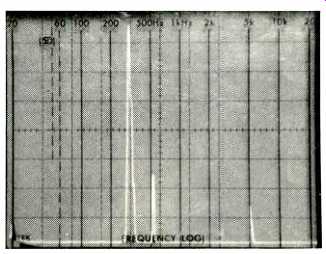
Fig. 3--Spectrum analysis of 20-kHz test signal (large spike) shows accompanying
out-of-band components at approximately 24 and 44 kHz.
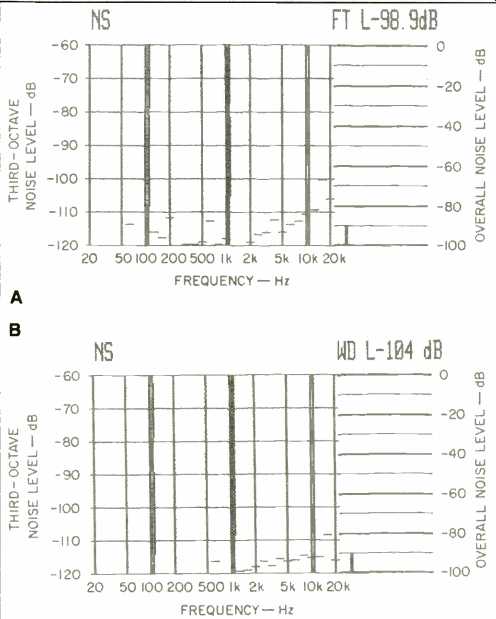
Fig. 4--S/N analysis, unweighted (A) and A-weighted (B).

Fig. 5--Separation vs. frequency.
Output voltage at 0 dB (maximum recorded level) measured almost precisely 2 V, as claimed. Actual harmonic distortion at mid-frequencies measured 0.003%, as claimed, for 0-dB level. However, when I used a distortion analyzer instead of a spectrum analyzer, readings were somewhat higher because of the presence of minute quantities of out-of-band components and, in some cases, negligible quantities of "beats" appearing within the audible spectrum. Figure 2, which shows distortion at various levels over a range of frequencies, includes these non-harmonically related components, which are reflected in the somewhat higher readings. In Fig. 3, a 20-kHz test signal is represented by a tall spike, while the shorter spike to its right is an unwanted component outside the audio range, at about 24.1 kHz. The additional small spike, near the extreme right, seems to be a component at the sampling frequency of the test disc, 44.1 kHz. The sweep in this display was linear, from 0 Hz to just over 50 kHz.
Unweighted signal-to-noise ratio for the CD X measured a very high 98.9 dB; with A-weighting inserted in the signal path, the S/N reading increased to 104.0 dB. Analyses of noise distribution within the audio range are shown for both types of measurements in Figs. 4A and 4B. Channel separation, plotted in Fig. 5, measured a full 90 dB at mid-frequencies and at the bass end of the audio spectrum. Separation decreased to between 80 and 86 dB at the high-frequency extreme, depending upon which channel was measured.
Reproduction of a 1-kHz square wave by the Bang & Olufsen CD X, shown in Fig. 6, corresponds exactly to the results obtained for other players which employ the same type of oversampling and digital filtering. Reproduction of a unit pulse, as seen in Fig. 7, was also typical of the results obtained with other players employing this same kind of D/A conversion. The coincident positive crossing of the horizontal axis of both the 200-Hz signal on the left channel of the test disc and the 2-kHz signal on the right channel, depicted in Fig. 8, shows that there is no measurable phase shift occurring in this player, at least up to 2 kHz.
Tracking of this particular sample didn't quite measure up to some other third-generation CD players I have tested. Specifically, the error-correction circuitry plus the servo-tracking arrangement was unable to get through my obstacle-course defects disc. There was an audible "glitch" while playing the "scratch" track covered with a 900-micron-wide opaque area. Admittedly, that's the widest obstacle on this disc, but several recent players have been able to get by it without any audible problems. I hasten to add that the player had no trouble working its way through the simulated dust particles or the simulated fingerprint smudge on the same disc.
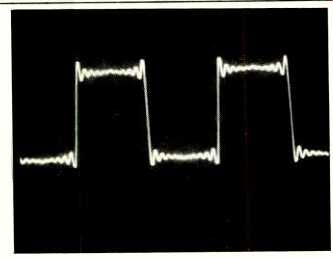
Fig. 6--Reproduction of a 1-kHz square wave.

Fig. 7--Single-pulse test.
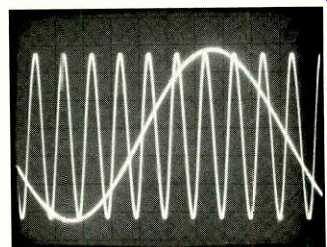
Fig. 8--Two-tone phase-test signal (200 Hz and 20 kHz) shows no phase
delay or error.
Use and Listening Tests
From the logical, brief, and easy-to-understand owner's manual to the unit's ease of operation, the CD X is a typical Bang & Olufsen masterpiece. I don't know just how much of the internal workings of the machine are built by B & O itself and how much of it is purchased from other sources. I suspect that the D/A conversion circuitry and related parts (or at least the D/A chips) come from Philips, while the transport mechanism, with its unique lift-up disc platter, must have originated with the designers at B & O.
As for sound quality, I had no quarrel whatever with the designers of this unit. In all respects, the sound reproduction was reminiscent of that of the various Philips (Magnavox) players I have tested over the past couple of years, all of which use the same basic D/A conversion approach. In other words, there was none of the harshness sometimes attributed to those machines that use a 44.1-kHz sampling rate and employ steep, multi-pole analog filters at their outputs. Among the newer CDs that I enjoyed while putting the CD X through its paces was a three-disc set of Richard Strauss' opera Der Rosenkavalier recorded at the Dresden Semper Opera House (Denon 100C37-7482-84). The naturalness and live quality of this recording were, in my opinion, faithfully reproduced by the CD X.
Another recent acquisition for my CD collection is West Side Story, a two-disc set with the composer himself, Leonard Bernstein, conducting and which features an operatic cast. Included is Kiri Te Kanawa, whose lovely, clear voice benefits from the CD technique. (This recording, Deutsche Grammophon's 415253-2, bears the designation "DDD," indicating that it was digitally mastered, digitally mixed and digitally recorded. When, by the way, are other record companies besides the Polygram group going to start using his sensible coding system to let us know how a given CD was produced?) Getting back to the Bang & Olufsen CD X, its price, in my opinion, is quite reasonable considering its many operating features, the ease with which they're executed and--of course--that magnificent human engineering which has be come almost synonymous with B & O designs.
-Leonard Feldman
(Source: Audio magazine, Mar. 1986)
Also see:
Revox B225 Compact Disc Player (Sept. 1984)
Bang & Olufsen Beocord 9000 Cassette Deck (July 1982)
Audio Alchemy DTI Pro Jitter Reducer and Resolution Enhancer (Dec. 1995)
= = = =